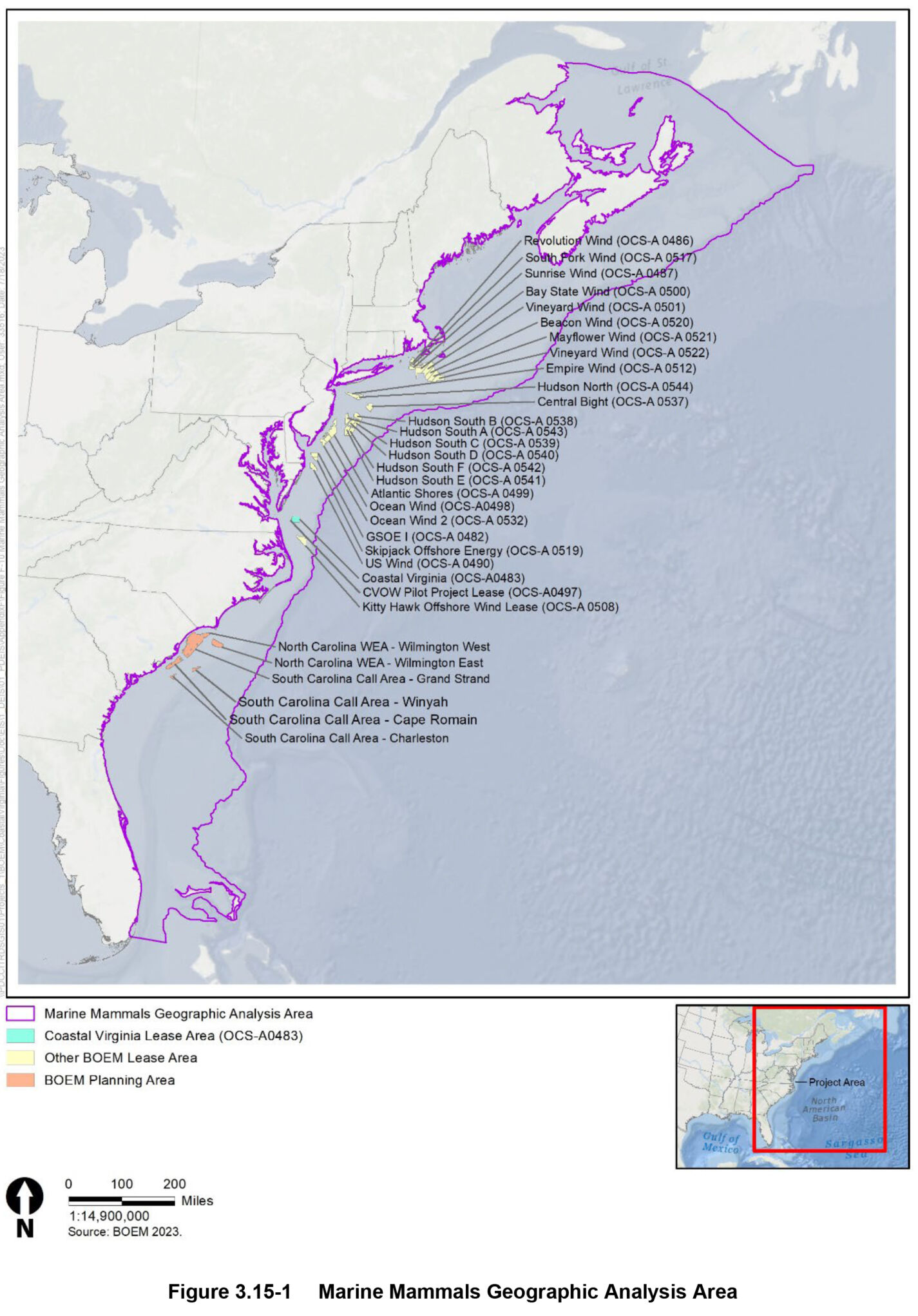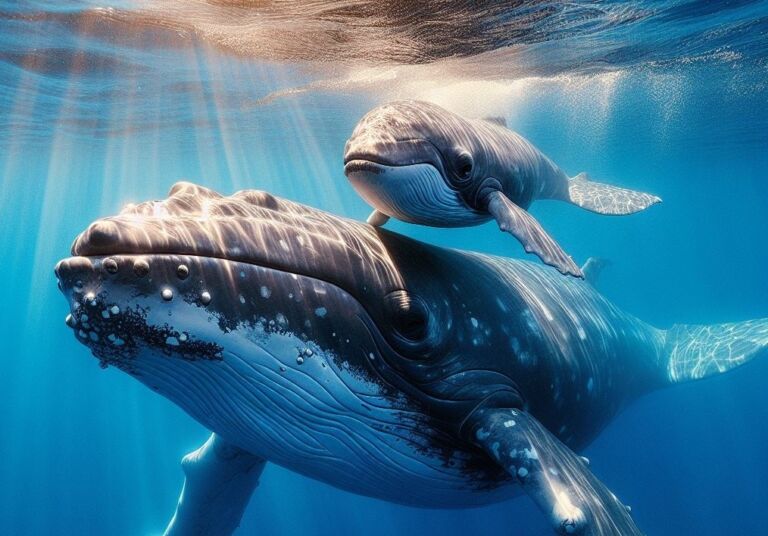- A lawsuit against the Coastal Virginia Offshore Wind project seeks redress from the courts to uphold the Endangered Species Act and save the critically endangered North Atlantic Right Whales
- Among other things, the lawsuit claims the administration illegally failed to consider the cumulative effects of so many offshore wind projects placed throughout the whales’ migratory route and feeding and calving areas
- Courts have previously rejected federal attempts to separate a project for individual consideration outside of cumulative effects, calling it a “slow slide” into destroying an endangered species
Pres. Joe Biden’s executive order to clog the Eastern Atlantic seaboard with massive wind turbines has been characterized by, among other things, a reckless hurry. In March, three public interest groups — the Heartland Institute, the Committee for a Constructive Tomorrow (CFACT), and the National Legal and Policy Center — filed a lawsuit against the Biden administration over their recklessness involving the Coastal Virginia Offshore Wind (CVOW) project. The project would feature 176 massive turbines and be the largest project of its kind anywhere in the world.
As a press release explains, the groups claim that the U.S. Bureau of Ocean Energy Management (BOEM), NOAA Fisheries’ National Marine Fisheries Service (NMFS), and other officials “illegally approved Dominion Energy’s offshore wind project by ignoring glaring and obvious procedural errors that subjects the endangered North Atlantic right whale to further grave harm.”
Map of Offshore Wind Projects (Planned or Leasing) in the Endangered North Atlantic Right Whales’ Migration, Feeding, and Calving Areas

Source: BOEM
At issue is the Biological Opinion (“BiOp”) prepared for construction, operation, and decommissioning of the CVOW project by the NMFS and accepted by BOEM. The groups claim that the BiOp does not meet the minimum requirements it should under the Endangered Species Act (ESA), including its Incidental Take Statement under the Marine Mammal Act, making NMFS and BOEM guilty of violating federal law. As such, any federal approvals for the project based on the “arbitrary, capricious, and unlawful” BiOp and its Incidental Take Statement must be set aside.
By law, the BiOp must take into account not only the effects of the individual proposed action, but also “cumulative effects,” which are “those effects of future State or private activities, not involving Federal activities, that are reasonably certain to occur within the action area of the Federal action subject to consultation.”
To illustrate cumulative effects, think of “death by a thousand cuts” — the Western term for the Chinese execution method lingchi (“slow slicing”). Any one cut might have little effect, but their cumulative effect was certain death.
As explained by the press release, the endangered whales would be “forced to navigate a gauntlet of 32 separate lease areas from Georgia to Maine twice each year” (see the map above).
Courts have previously found that considering a project individually outside of cumulative effects is invalid. The ESA applies to all effects, impacts, or projects of which a particular project is only a part. Otherwise, as the Ninth Circuit found in Wild Fish Conservancy v. Salazar (2010), “A listed species could be gradually destroyed, so long as each step on its path to destruction is sufficiently modest. This type of slow slide into oblivion is one of the very ills the ESA seeks to prevent.”
Issues with the Biological Opinion
There are many endangered and threatened marine and avian animals in areas being fast-tracked for offshore wind energy development by the Biden administration, but arguably none are as critically endangered as North Atlantic Right Whales (NARWs). The rapidly declining population is down to an estimated 360 whales, of which only 70 are capable of bearing calves.
The North Atlantic Right Whale “problem” for Biden’s offshore wind goals is so obvious that the Biden administration drafted a “strategy document” for how to manage it, titled “BOEM and NOAA Fisheries North Atlantic Right Whale and Offshore Wind Strategy.” Its admissions were telling (emphasis added):
- “The species faces a high risk of extinction, and the population is small enough that the death of even some individuals can have a measurable effect on its population status, trend, and population dynamics. Further, the loss of even one individual a year may reduce the likelihood of recovery and the species achieving optimum sustainable population.”
- “NARWs engage in migration, foraging, socializing, reproductive, calving, and resting behaviors critical to their survival … . The overlap between OSW development (planned, leased, and permitted) and NARW habitat extends to corridors outside the immediate development sites, where vessel traffic between ports and offshore sites would further overlap with the distribution of NARW.”
- “Effects to NARWs could result from exposure to a single project and may be compounded by exposure to multiple projects. It is important to recognize that NARW migrating along the U.S. Atlantic Coast travel through or nearby every proposed OSW development.”
Such acknowledgments cry for an abundance of caution, not a “strategy” of managing how others would perceive the risk to the endangered whales. Unfortunately, it seems that the Biden administration chose the latter tack with the BiOp and its Incidental Take Statement (ITS). The ITS is important because it sets aside for permittees the Endangered Species Act’s prohibition on “taking” a threatened or endangered species, with “take” broadly defined as “to harass, harm, pursue, hunt, shoot, wound, kill, trap, capture, or collect, or to attempt to engage in any such conduct” or compromising habitat “essential to the conservation of the species.”
The Biden administration’s Incidental Take estimate for the CVOW project was that zero NARWs would be injured and only 17 would be impacted by “disruption of behavioral patterns, including, but not limited to, migration, breathing, nursing, breeding, feeding, or sheltering.” Elsewhere, however, NOAA has anticipated that CVOW will result in the deaths or serious injuries of eight NARWs per year (see Table 7), as well as two fin whales, 11 minke whales, and 12 humpback whales, among many other impacted species.
That zero is critical, because the NMFS had determined the Potential Biological Removal Rate of NARWs to be 0.7 whales — “the population cannot sustain, on average over the course of a year, the death or serious injury of a single individual due to human causes.” Any number above zero would violate the ESA.
Other Issues
Failing to account for cumulative effects of dozens of offshore wind developments placed in the whales’ migratory route and anticipating the loss of NARWs far above their Potential Biological Removal Rate are some reasons behind the lawsuit. Another is that the BiOp didn’t follow the law requiring the “best scientific information available” for developing standards for the whales’ noise tolerance — all of the studies used by the Biden administration are yet ongoing, so there was no scientific information available. Among some of the other reasons are that the BiOp didn’t take into account such matters as pile driving and other project activities and operations forcing NARWs out of their preferred habitat, out of their preferred migratory routes, away from foraging grounds, and into harm’s way from vessel strikes.
The suit claims that the BiOp “constitutes an arbitrary and capricious action in violation of the ESA and the Administrative Procedure Act” and should be ordered unlawful and void, along with its ITS. Furthermore, “all other federal approvals for the project that relied on the legal adequacy of the BiOp, including take or harassment authorizations,” should be set aside.


